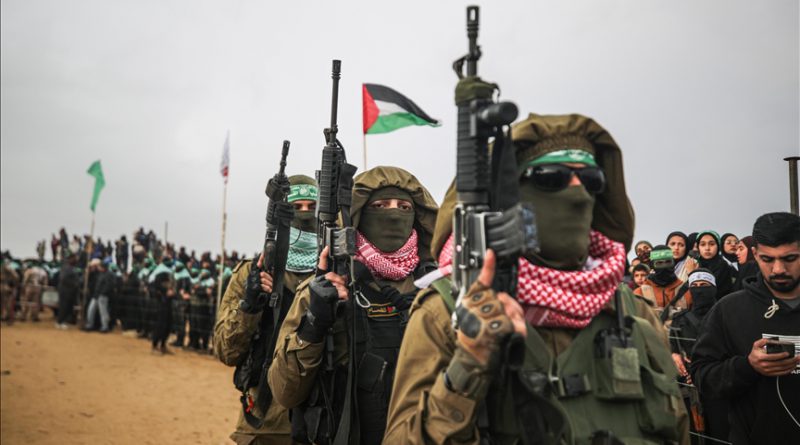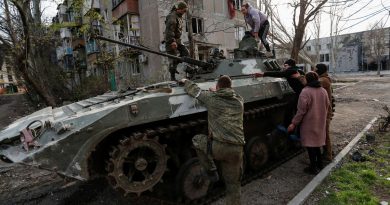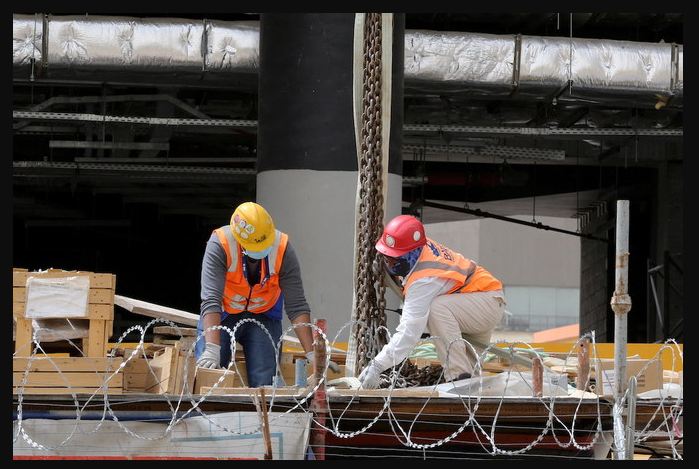OPINION: No, It Didn’t Start on October 7. It Started in 1987
Iran can’t export its revolution to a quiet region. It needs the noise, the chaos, the funerals, the flames. And Hamas delivers.
If you’re one of those people who chants “From the river to the sea” and dreams of abolishing Israel altogether – scattering its people to the wind – then I’ll save you some time: this post isn’t for you.
You’re not interested in peace. You’re not interested in history. You’re interested in fantasy. So block me. Mute me. Move along.
But if you’re still here, let me walk you through a bit of actual history. Because I’m tired of the shallow takes that say “It didn’t start on October 7.”
Yes. We know.
But guess what? It also didn’t start in 1967. Or in 1948. Or 1929. Or 1882.
We can keep going, all the way back to the destruction of the Second Temple in 70 CE if you really want. But that’s not a productive exercise. It’s a trap — a game of historical one-upmanship no one ever wins.
Let’s stick to modern, actionable history.
Because if you’re really asking when this phase of the conflict began, the answer is 1987 – the year Hamas was born.
1987: The Real Turning Point
That’s when this went from a difficult national conflict to a proxy war fueled by forces far beyond Palestine.
Hamas was not established as a national liberation movement for the Palestinians. No.
It was created as a spoiler. A saboteur.
And yes, it deliberately modeled itself on its slightly older sibling – Hezbollah in Lebanon – which had formally announced itself just two years earlier, in 1985.
At first, Hezbollah wasn’t even called Hezbollah.
Its name? Harakat al-Muqawama al-Islamiyya fi Lubnan – the Islamic Resistance Movement in Lebanon.
Then came Hamas in Gaza – using the exact same name: Harakat al-Muqawama al-Islamiyya. Just dropping the “Lebanon” bit.
Coincidence?
Not at all.
Hezbollah was birthed and bred by the Iranian Revolutionary Guard. Hamas emerged from the Muslim Brotherhood, yes – but the branch of the Brotherhood that had cozied up to Iran and the Ayatollahs since the 1979 Islamic Revolution.
So, while one was Shia and the other Sunni, they shared something far more important: a common purpose – to destroy any chance of peace between Palestinians and Israelis.
1993: Peace Threatens the Project
Fast forward a few years. 1993 – Oslo Accords.
Yasser Arafat and the PLO accepted the existence of Israel and launched a peace process, starting in Madrid (1991) and culminating in Oslo. But peace was a threat – not to Palestinians, but to the Iranian project.
So what did Hamas do? It unleashed a campaign of suicide bombings and terror attacks, all designed to torpedo the peace process. At the same time, Hamas leaders – Ahmad Yassin, al-Rantisi, al-Zahar, Khaled Meshaal – went on visits to Tehran.
They met Khamenei, praised Khomeini, and declared him the “spiritual father” of their movement. There’s video. Look it up.
They weren’t subtle. Because this was never just about resisting Israeli occupation. It was about resisting any resolution that didn’t come through endless war – war that Iran could weaponise.
2005: Withdrawal From Gaza
Israel withdrew unilaterally from Gaza in 2005. No more settlers. No more military presence. It was a gesture – maybe imperfect – but a major step.
What did Hamas do? They used Gaza as a base to wage war – not just against Israel, but against the Palestinian Authority.
In 2007, they staged a bloody coup, executed Fatah officials, and turned Gaza into a warlord fiefdom. They didn’t want unity. They didn’t want diplomacy. They wanted hegemony — and they wanted it under the patronage of Tehran. To create an IRGC forward base against Israel.
2009, 2014, and Onwards: Every Time There’s Hope, Hamas Kills It.
Every single time peace was back on the table – with the PA, with the US, with regional actors – Hamas would launch rockets, escalate violence, provoke war.
Why? Because their very existence depends on permanent conflict. They don’t want peace. They want a perpetual state of siege. Because peace would mean relevance lost.
Iran can’t export its revolution to a quiet region. It needs the noise, the chaos, the funerals, the flames. And Hamas delivers.
2023: October 7 – A Calculated Explosion
Now to the point everyone pretends is the beginning. October 7 was not an eruption of spontaneous rage. It wasn’t the product of an “intolerable status quo.” For over a year before that, things were relatively quiet.
What was happening? Israel and Saudi Arabia were inching closer. That would have transformed the region – and likely brought real gains for the Palestinians, too.
But Iran saw danger. A Middle East at peace is a Middle East that doesn’t need Iran.
So what did Hamas do? They unleashed an act so horrific, so medieval, so brutal – designed not just to provoke Israel, but to make regional peace politically impossible.
It worked. At least for now.
Let’s Be Real
Hamas is not a rational actor. Not a state. Not a government. Not a liberation movement.
It is the Gaza branch of the IRGC. It thrives on cycles of retaliation. It fuels martyrdom to recruit more children for its suicidal cause.
It exists to keep Palestinians forever stateless, forever stuck, forever pawns in a larger game. So yes, it didn’t start on October 7.
But for the phase we’re living through now – the phase of Iranian sabotage masquerading as Palestinian resistance – the real start date was 1987.
Unless, of course, you don’t believe Israel should exist at all. In which case, your argument isn’t about justice. It’s about abolitionism, ethnic cleansing, and historical erasure.
But here’s the thing: The UN created Israel. And unless the UN unanimously votes to dissolve it (spoiler: they won’t), then yes – it exists. It’s not going anywhere.
And Hamas knows it. They just can’t admit it. Because if they did, they’d have to do something they were never built for: Govern. Negotiate. Build a future.
And that – for them and for their Ayatollahs patrons in Tehran – is the real nightmare.
Disclaimer: Views expressed by writers in this section are their own and do not reflect Milli Chronicle’s point-of-view.


